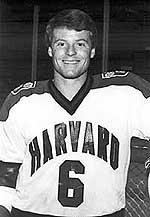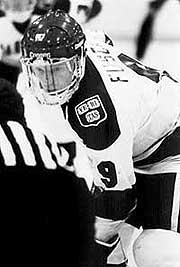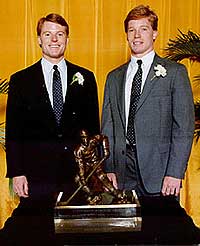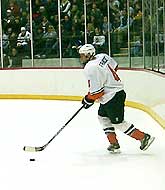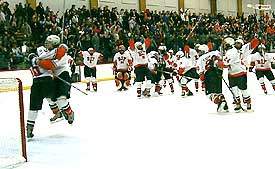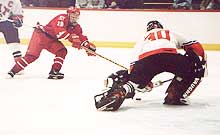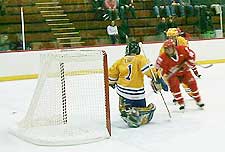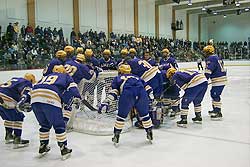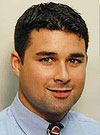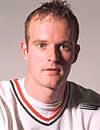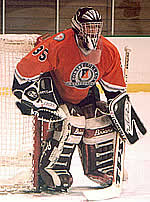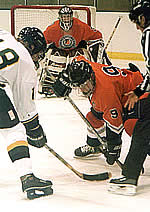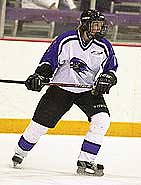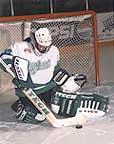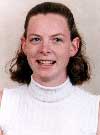The New Class
It wouldn’t be unreasonable to think of Thomas Vanek, Tyler Hirsch and Gino Guyer as being in the mold of Noah Clarke and Grant Potulny.
Just follow this one.
In the 1999-2000 season, Clarke made his WCHA debut with a tremendous campaign — 17 goals and 20 assists in 39 games for Colorado College. The only reason he wasn’t the WCHA’s rookie of the year was a kid named Dany Heatley.
In 2000-01, Potulny did about the same for Minnesota, putting up 22 goals and 33 points in his first season. The only reason he wasn’t the league’s rookie of the year was a kid named Peter Sejna.
With North Dakota’s Zach Parise the target for the majority of the attention given to the league’s freshmen this season — and justifiably so thus far — Minnesota’s Vanek, Hirsch and Guyer might find themselves in a position similar to that of Clarke and Potulny.
Chances are, they’d take it.
Going through the season without being expected to take the world by storm, as is some of the weight on Parise, should afford that Minnesota trio the necessary time to grow into the scorers of the future.
The Gophers won’t be counting on Vanek and Hirsch, each of whom netted a goal and an assist in last Saturday’s 7-2 victory over Ohio State, for instant offense this season. As a center on a team that lost two preeminent middlemen in the offseason, Guyer, who also scored on Saturday, has slightly more expected of him.
Guyer was Minnesota’s Mr. Hockey last season at Greenway High School. Eyes are on Vanek as the first European to play for the Gophers and as a big-time scorer last season in the United States Hockey League. Hirsch was Parise’s linemate last season at Shattuck St. Mary’s high school in Minnesota.
“We have enough good players where we don’t have to rely on one freshman to carry the mail,” Gophers coach Don Lucia said. “We don’t need a freshman to come in and be our No. 1 center or quarterback our power play. We have guys returning that can do those jobs. They’re able to move into the lineup in a little bit less significant roles.”
Each has the potential to make waves as a freshman, as they showed in their first game. That’s nothing out of the ordinary for the Gophers, however. Vanek scored their first goal of the season, making it three years in a row a freshman has done so for Minnesota (Mike Erickson last season and Matt Koalska two years ago).
But that group just scratches the surface of the list of league freshmen who could play a role larger than their limited experience would suggest. The Gophers contribute even more, with defensemen Peter Kennedy and Chris Harrington rounding out a dynamite recruiting class.
CC defenseman Mark Stuart got the only vote for WCHA rookie of the year not awarded to Parise by the league’s 10 coaches. The Tigers also feature forwards Brett Sterling and Marty Sertich, the 2001 Minnesota Mr. Hockey — he’s the first top Minnesota prep player not to play for the Gophers since Kris Miller, the 1987 winner, played at Minnesota-Duluth.
St. Cloud State has some potential bright spots in forwards Bille Luger, Brock Hooton and Jonathan Lehun, but scoring hasn’t been and isn’t now the concern for the Huskies (things like being able to field a full defense tend to cloud other issues).
With defensive spots open in Denver, Scott Drewicki and Brett Skinner will get some chances for the Pioneers. The same goes for Lee Marvin and Matt Greene at North Dakota — yes, the Sioux indeed have some freshmen not named Parise.
Wisconsin dressed five freshmen in last Friday’s season opener, including a third line of Nick Licari, Adam Burish and Ryan MacMurchy.
And, though he isn’t a freshman, UMD’s T.J. Caig will get plenty of attention when he’s eligible for his first collegiate action in late December.
Digest all that? It’s almost enough to make you ask, “Zach who?”
Yep. Right.
It’s In The Net
If you have seats behind a goal at the Kohl Center and enjoy the unobstructed view, you’d better enjoy it while it lasts.
Sometime this season, crews will install nets much like ones at the ends of the ice in NHL arenas at the Kohl Center. They weren’t ready for the start of the season because the installation will require some construction in the ceiling to allow for quick retraction for event changeovers.
The same process is under way in Duluth, where Bulldogs coach Scott Sandelin said he expects safety nets to be in place by the time Colorado College rolls into town next weekend.
Ultimately, safety is the concern, especially after a 13-year-old fan died at an NHL game last season days after being hit by a puck. But there are some who think enclosing the ice is a bit extreme.
“It’s like anything; I think you can overreact,” Lucia said. “Some people get hit, but there’s risk in everything we do in life. You can’t eliminate every risk in everything we do.”
The WCHA discussed safety netting in its buildings in the offseason, but no action was taken. Some think it’s more a matter of when it’ll happen than if.
“I think it’s a big discussion point, but I don’t think it was ready for this year yet,” said Colorado College coach Scott Owens, who estimated costs to install safety nets at the World Arena would run into six figures.
On The Shelf
At Minnesota, captain Potulny was originally expected to be out for up to six weeks with a broken fibula. Potulny, the overtime hero of last season’s NCAA championship game, was injured last Saturday.
However, the latest word is that Potulny could be out four months because he also tore ligaments in an ankle.
“Taking your captain out of your lineup to a young team — as much a fear as anything else is, who’s going to step up with the leadership and who’s going to be the vocal guy in the locker room? Because we do have a bunch of quiet kids for the most part,” Lucia said.
Appealing Again
For the second time in a year, Minnesota-Duluth is finding itself with an eligibility issue for one of its players.
Last season, it was Caig and his participation in a major junior tryout camp that brought on dealings with the NCAA. Now, the Bulldogs are appealing to restore the eligibility of freshman Justin Williams.
The NCAA Clearinghouse, which handles eligibility issues, said it required 17 Canadian high school core courses and Williams had only 16. The matter is under appeal and UMD is waiting for a decision from an NCAA committee.
UMD was working off a form that required 16 core courses, Sandelin said. Another form the school later received listed 17.
“From our standpoint, it’s black and white,” Sandelin said. “From [the NCAA’s] standpoint, I’m sure there’s other things. It’s just frustrating to have them add something that really they gave us no justification for adding.”
Williams, 6-foot and 180 pounds, scored 213 points in 201 games from 1998 to 2001 for Drayton Valley of the Alberta Junior Hockey League.
“He works extremely hard, so, yeah, he would have seen some ice time,” Sandelin said. “And maybe he will against Colorado if we get a favorable ruling.”
Here You Go
Attention, New Hampshire fans — in particular the ones who already had this weekend circled on the calendar before leaving St. Paul last April.
Minnesota’s coming to town with the national championship, the No. 1 ranking and a coach who’s willing to lead the cheers of “Overrated!”
There you go, Whittemore Center fans. All wrapped up and ready for you to run with.
“You can start the overrated chant right now because we don’t belong as the No. 1 team in the country,” Lucia said. “I think we have the potential to be a pretty good team but we’re nowhere near that right now.”
Because of Potulny’s injury, the Gophers likely will dress six freshmen. Half of the forwards that played in last season’s title game won’t be around for this weekend.
It’s hard to gauge whether the Gophers are the No. 1 team in the country because voters think they’re the best team, or because they won the national title last season and haven’t lost since.
It’s probably a combination of the two. Whatever its origins, that ranking will be severely tested this weekend.
“It’s going to give us an indication of how far we have to go,” Lucia said. “There’s going to be times this weekend, unlike last week, where we’re going to spend time in our own zone and we’re going to get frustrated, we’re going to have 7,000 people screaming against us.
“[To see] how well we react to that, it’ll be good. Because then we can go back to work on Monday and say, ‘See, I told you.'”
Second Time Around
Denver did a decent job of handling Boston College and Northeastern last season at the Nye Frontier Classic in Anchorage. Now the Hockey East schools get a chance at the Pioneers in their barns.
In a big weekend for WCHA-Hockey East duels, Denver goes to Chestnut Hill on Friday before visiting Matthews Arena on Saturday. Victories over BC and Northeastern were Nos. 1 and 2 of nine straight to open last season, but remember that streak ultimately was undone by another Hockey East team, New Hampshire.
Denver showed none of the rust or defensive inexperience that may have been expected last weekend. On the contrary, in a 5-0 victory over Michigan State, the Pioneers proved the defense is ready and in a 3-2 win over Nebraska-Omaha, they proved the offense is set to provide timely goals. Luke Fulghum scored with 1:25 left to break a 2-2 tie.
Believe The Hype
In case you missed it, Parise’s first weekend in college hockey went something like this:
Five goals (two on the power play, two shorthanded and one at 5-on-5), three assists, 10 shots (a .500 shooting percentage isn’t too shabby), a plus-2 rating, a first-star selection, a second-star selection, two North Dakota victories and a WCHA offensive player of the week award.
So much for being overhyped.
No Read
So we know the St. Cloud State special teams have picked up just about where they left off last season. The Huskies scored two power-play goals and two shorthanded goals in a split last weekend at Ferris State.
We can infer from the performance of the Huskies goaltenders last weekend that Jake Moreland is getting closer to being a solid No. 1. He made 40 saves in a 2-1 win on Friday while Jason Montgomery stopped only 26 of 31 shots in a 6-3 loss on Saturday.
That may be all of a read of St. Cloud that can be made, however. It scored only one 5-on-5 goal all weekend, that coming from freshman Brian McCormack.
It’s too early to tell whether a lack of even-strength goals is going to be a trend for the Huskies. But it’s likely there will be nights when the power play isn’t happening and the Huskies’ offense then will need to prove it can get the job done at 5-on-5, too.
Youthful Mistakes
A pair of long road trips should give Owens more of an idea what he’s working with this season.
The Tigers play Maine and Iona in the Nye Frontier Classic in Anchorage this weekend and go to Duluth next weekend. Through the first six games of the season, all Owens is hoping for is for his team to “keep our head above water.
“I think we were hurt a little bit by not playing an exhibition game this year,” he said. “We didn’t get into our building until the day before we played. The key is I’m real high on our young guys; we’re just very young and we’re going to make some mistakes.”
The mistake of going to the penalty box cost CC in a 4-1 loss to Massachusetts-Lowell last Saturday. Richard Petiot was called for charging, leading to a goal. Peter Sejna was called for tripping, leading to a goal three seconds after the resulting power play ended.
And the Tigers were called for too many men on the ice, leading to another River Hawks goal.
No Holding
Minnesota-Duluth held leads in both of its games against Notre Dame last weekend but has only a tie and a loss.
The Irish scored a goal in the last minute to force a 2-2 tie and rallied from a 2-0 deficit for a 5-3 victory. They outscored UMD 4-1 in the third period last weekend.
That goes back to a trend the Bulldogs would be happy to stop as soon as possible. They were outscored 57-37 in the third period last season.
Boeser Back
Wisconsin defenseman Dan Boeser, who battled follicular B-cell lymphoma this summer, was in the starting lineup for last Friday’s Badgers season opener. But he was held out of Saturday’s game, ending his streak of consecutive games played at 81.
Wisconsin coach Mike Eaves said he held Boeser out because the junior wasn’t in optimum condition after missing some of training camp because of his illness.
“I think it was the right thing to do if you are playing percentages and you want to play it smart,” Eaves said, “although he [Boeser] would never agree with that.”
Making An Appearance
Vice President Dick Cheney made an appearance at the Colorado Springs World Arena last Saturday night before the Colorado College game. His wife and daughter are CC alums who were back for homecoming festivities.
Cheney was presented with a CC hockey jersey, but no one from the team got to meet the VP.
“They’ve got helicopters hovering over the World Arena,” Owens said. “It’s just a big-time entourage and you can’t even get close.”
In Other Words…
Minnesota State-Mankato is the last WCHA team to open its season, doing so this weekend with a series at Providence. It’s the first meeting between the schools. … Mavericks forward Shane Joseph earned titles as the team’s best stickhandler and fastest skater in a skills competition. Dana Sorenson won the shooting accuracy contest and Kyle Nixon came out on top in the goaltending category. … UMD assistant captain Jesse Unklesbay is the first first-year Bulldogs player ever to be a captain. He played two seasons at Alaska-Anchorage before transferring. … Erik Jensen was Wisconsin’s captain in last Friday’s opener. Eaves will not name a permanent captain until the second half of the season.
